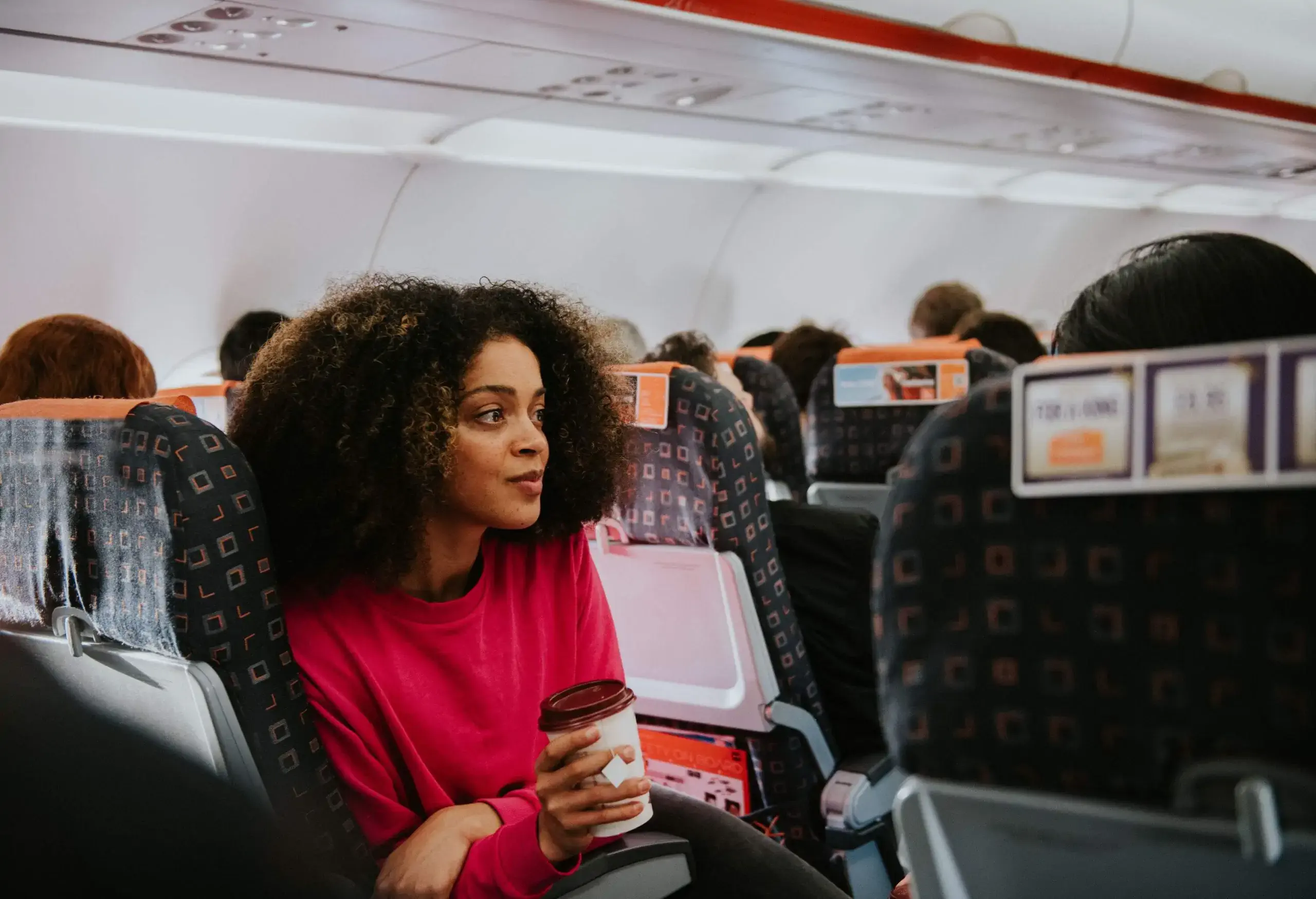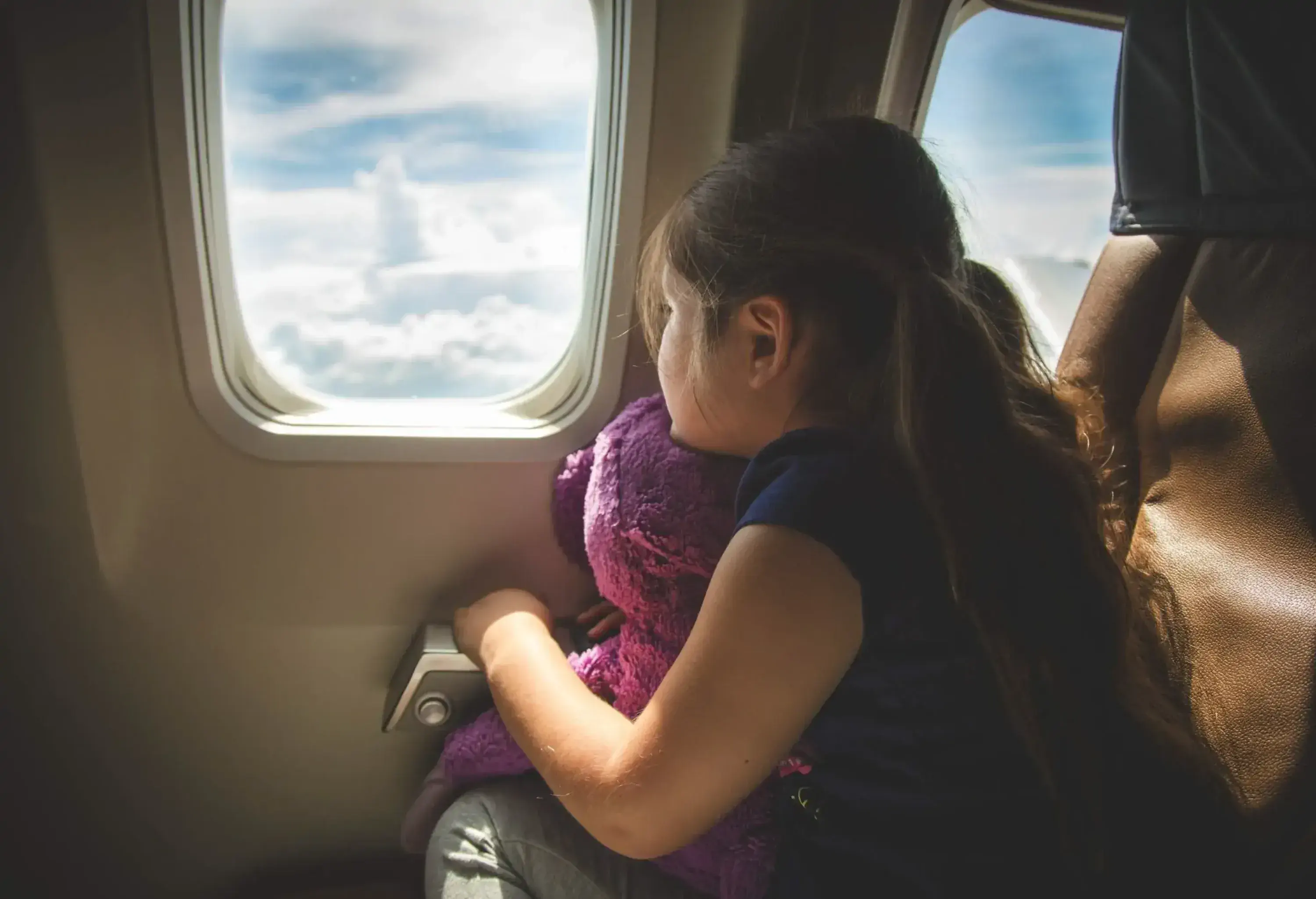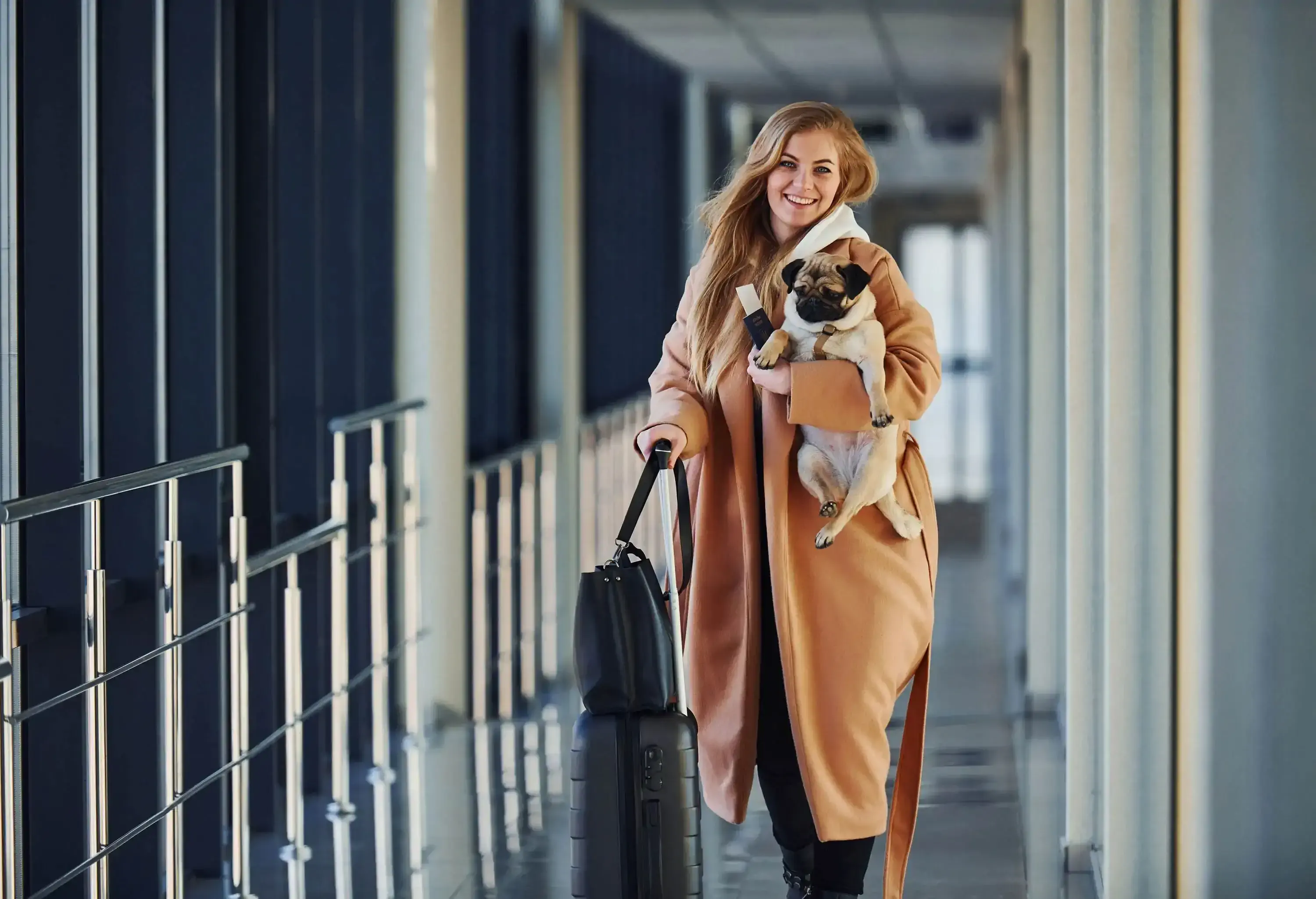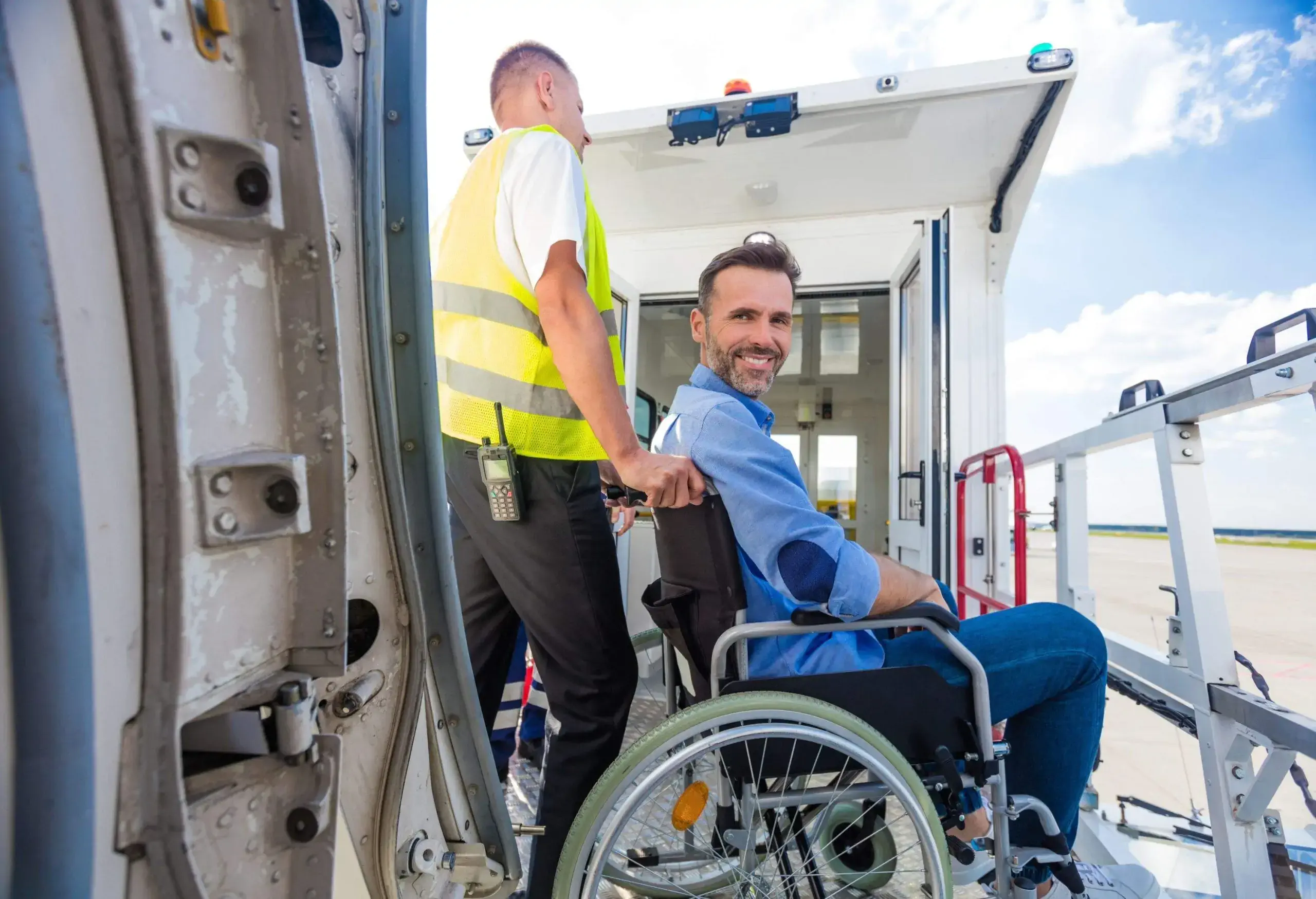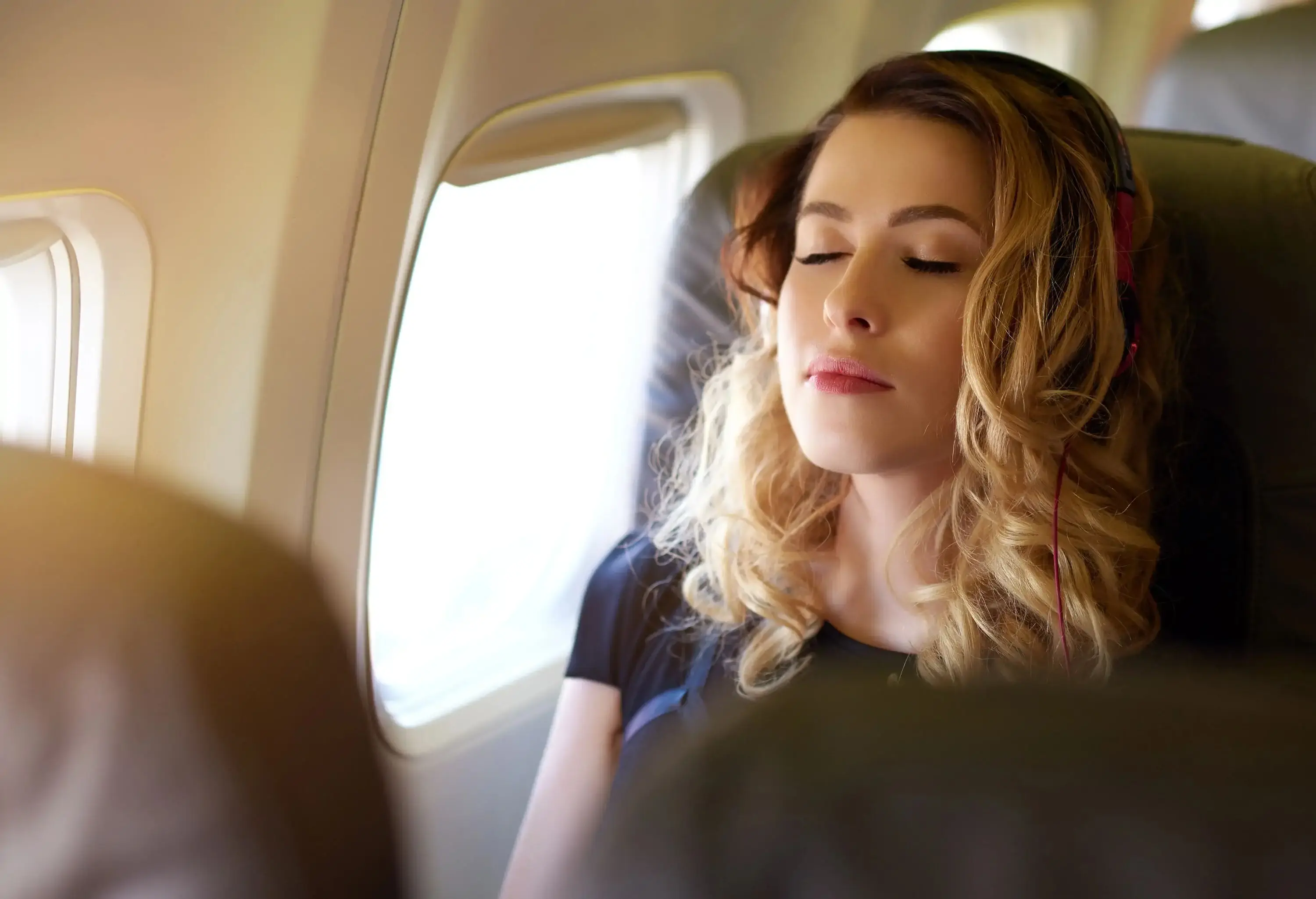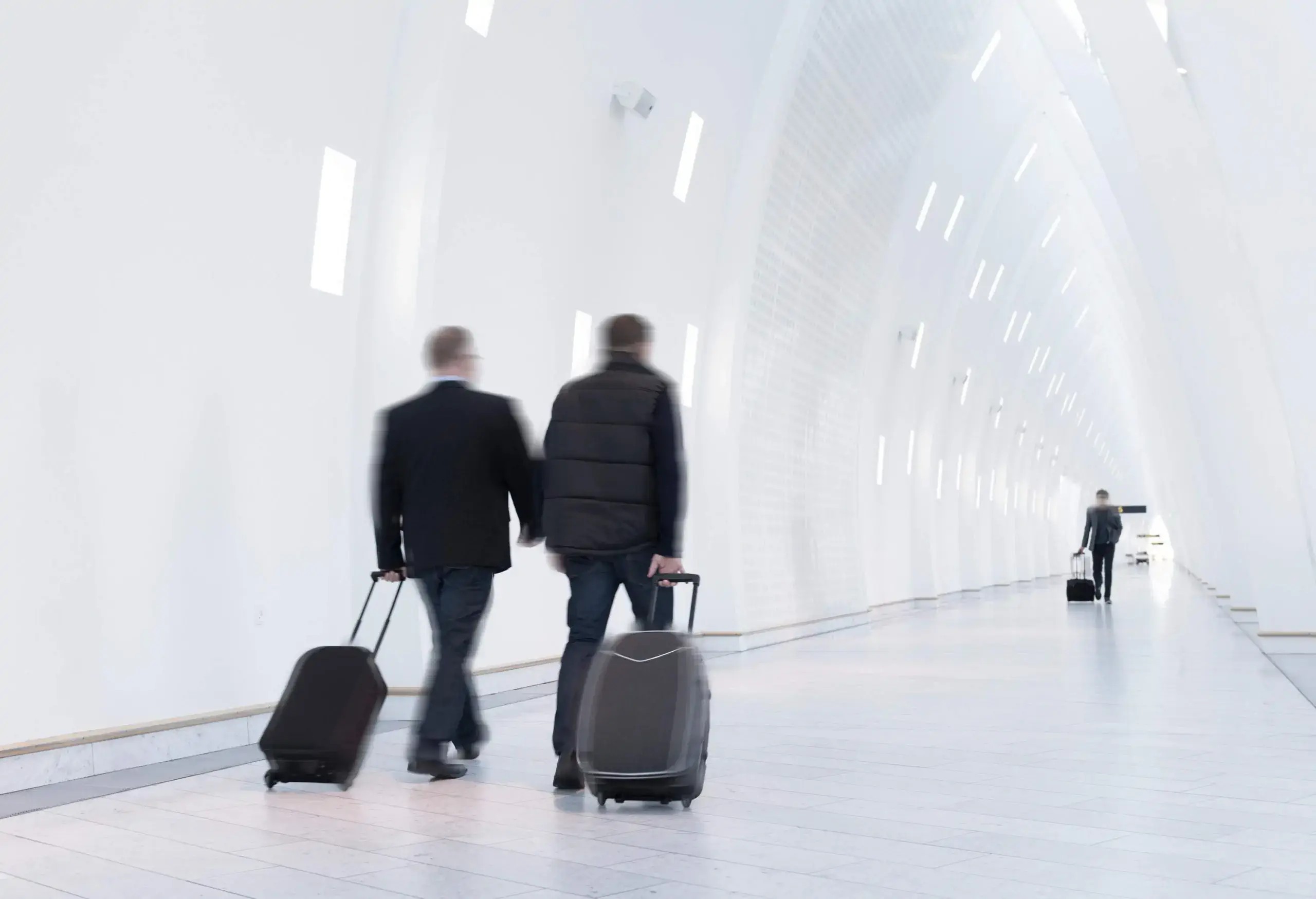Flight anxiety, also known as aviophobia, affects around a third of people. With air travel now so accessible, more and more travelers want to know how to get over their fear of flying. In this article, I offer practical advice and techniques on how to prepare and manage anxiety in the air.
I’ve asked experts to share their most useful tips for coping with mild to moderate flight anxiety. Of course, if you’re experiencing severe flight anxiety, seeking medical help might be your best solution.
What is a fear of flying?
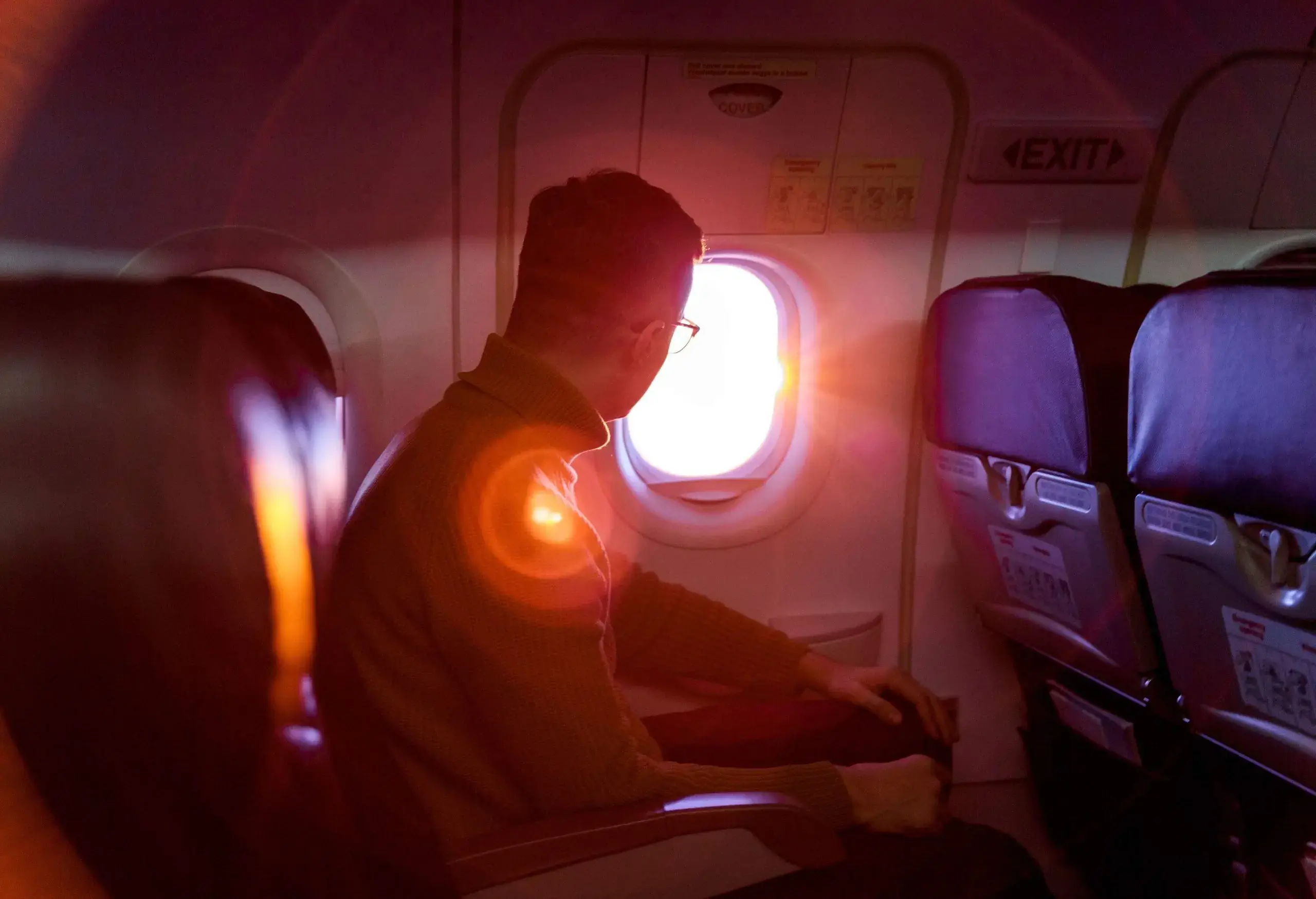
The fear of getting on a plane and taking off is thought to affect around one in three people. For many, it’s an unpleasant experience that they can manage to some degree. For around five per cent of people however, it manifests as a crippling fear or clinical phobia. This is often called aerophobia or aviophobia.
What are the symptoms of flight anxiety?
The symptoms of flight anxiety range from manageable to overwhelming. Just like other forms of anxiety, they can manifest as a range psychological and physical symptoms.
- Increased heart rate: One of the most common physical symptoms of flight anxiety.
- Sweating: Though normal to sweat when anxious, it can get worse as anxiety increases.
- Shortness of breath: Can happen if you’re feeling overwhelmed or stressed, and increase your anxiety even more.
- Nausea: Especially common if you’re prone to motion sickness or get overwhelmed in cramped, crowded spaces.
- Cognitive distortion: Often involves catastrophizing and making negative assumptions about what could happen, like the plane crashing.
What causes a fear of flying?
The causes and triggers for flight anxiety are different for everyone. For some it might be the lack of control, for others it could be an uncontrollable fear of heights or crashing.
Understanding the root causes is crucial to finding coping mechanisms to manage your fear of flying. Take some time for self-reflection and try to consider what might trigger this anxiety. Identifying and learning strategies to overcome them can help make flying a more enjoyable experience.
Fear of the unknown.
Not knowing what’s happening on the plane, from safety protocols to strange noises, can be unsettling. Familiarizing yourself with what to expect on board and what to do in case of an emergency can help alleviate these anxieties.
Fear of crashing.
An obvious one, but fear of the plane crashing is one of the most common causes of flight anxiety. Many people stress about the potential dangers of flying and their lack of control over the situation. The simple truth, however, is that flying is actually the safest ways to travel and plane crashes are rare. A 2024 MIT study showed the odds of dying in a commercial plane crash are around 1 in 13.7 million.
Claustrophobia.
If you don’t like enclosed spaces, it’s entirely understandable why a plane cabin can trigger that fear. Beyond any usual coping mechanisms you may have for this, like noise-canceling headphones, it may help to book an aisle seat to give yourself more room.
Fear of heights.
Looking down at the world far below is an obvious trigger for anyone who doesn’t like heights. Booking an aisle seat and not looking out of the windows will help the immediate fear. Try to focus on activities like reading or listening to music while on board to keep your thoughts occupied. And remember – planes are designed to fly at high altitudes where it’s smoother and safer than flying through weather.
Tips to manage a fear of flying
Facing up to and getting over a fear of flying can be a challenge. But there’s lots of practical advice and expert guidance available for before and during your flight to ease your mind and body.
How to manage anxiety before you fly.
Like waiting for the dentist, preparing in the run-up to a flight can be scary enough itself. But with the right research and approach, you’ll be able to board with more confidence.
Make a pre-flight plan.
One of the best tips for flying is to make a pre-flight plan that makes you feel more in control. Research the airline and plane model you’ll be taking so you get an idea of what to expect on board. Check the flight time and route, where you’ll be sitting and what services there are on board. And if you’ve ever wondered what all those strange noises are, you can even research that too.
Educate yourself.
Heather Poole, flight attendant and author of the book “Cruising Attitude”, recommends reading up on how weather can affect the flight experience. “You can download the app MyRadar and watch the weather light up your screen: blue, green, red. Then you’ll know exactly when to expect turbulence, how bad it might get, and how long it will last.”
Lloyd added: “Apps like SOAR, Skyguru, and Turbcast predict turbulence and warn you in real-time. If you like knowing what to expect and when it will pass, these apps can offer tremendous peace of mind.”
Pack comfort items.
Packing things that make you feel more comfortable during the flight is a great antidote to anxiety. Jen Lloyd of Sick Girl Travels recommends bringing noise-canceling headphones, your tablet, or a good book. “You can also consider downloading some games for your phone. It helps to have something to distract you from the flight and get your mind off your anxieties” Lloyd told me.
Choose the right seat.
Sitting in the right place can go a long way to making your fears more manageable once onboard. A seat over the wings in the middle of the cabin helps reduce the effects of turbulence. The golden rule once in your seat is to always keep your seatbelt fastened, which in itself provides an added sense of security.
Booking well in advance gives you the best chance of getting your preferred seat. Now you just have to decide where works best for you.
- Aisle seat: Offers more room to move than a window seat, which helps against claustrophobia. And you’re away from the window, so no high views to unsettle you. Aisle seats also offer easier access to the galley, restrooms and cabin crew. If you get overwhelmed, don’t be afraid to get up, stretch and talk to the crew.
- Bulkhead seat: Located near the front of the cabin, bulkhead seats offer a bit more space than most other seats. They’re better than emergency exits if you have anxiety, as there’s no expectation on you should something happen. They also offer easy access to the restroom and galley. But be warned, you may find yourself sitting next to young children or babies. If they’re nervous or loud, it may not be so calming after all.
Talk to a professional.
If your anxiety is particularly severe, or if it is preventing you from flying, then it may be beneficial to talk to a specialist. A mental health professional can provide strategies for managing your anxiety and coping with difficult situations.
How to manage anxiety during your flight.
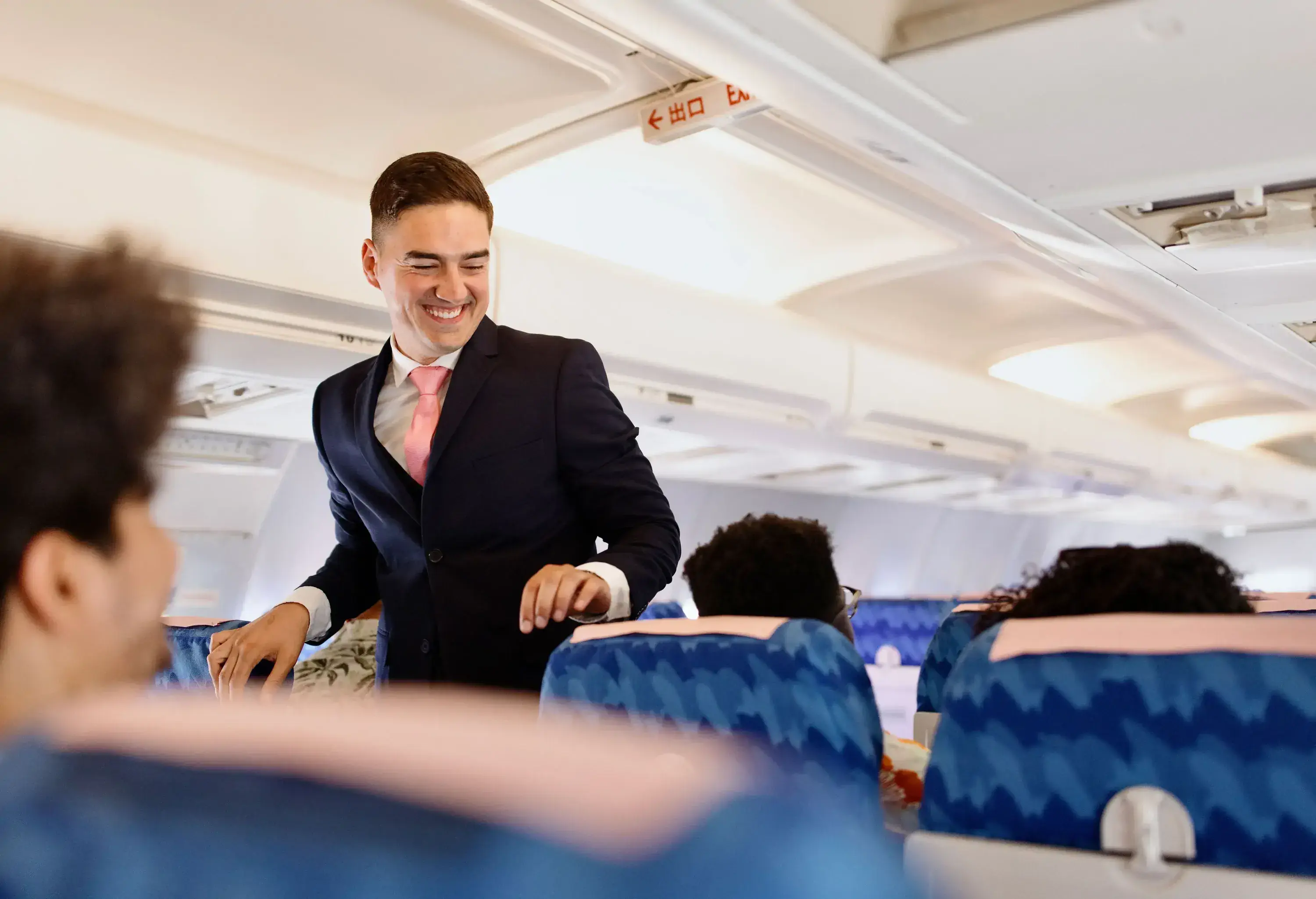
Once you’ve taken all the steps you can to educate and prepare, turn your attention to the flight itself.
Wear comfortable clothes.
Dressing for comfort is one of the best tips, especially for long-haul flying. Comfy, familiar clothes can reduce stress levels and help you sleep more easily. Loose-fitting clothing made from breathable fabrics like cotton is ideal.
Talk to cabin crew.
Don’t be afraid to tell cabin crew you’re not the most confident flyer. This is something they’re very used to and deal with every day. They’ll be happy to check up on you, offer reassurance and answer any questions or concerns you have.
Distract yourself.
Use the myriad things at your disposal to distract yourself. A movie, a book, calming music, games, conversation – all will help pass the time and relieve anxiety. Sensory aids like sour candy and nice-smelling moisturizers can also help calm and ground you.
Visualize success.
Visualization is a powerful tool. Visualize yourself having a successful flight through to landing. This can help build confidence and ease anxiety, while also helping you focus on positive outcomes.
Expert-backed techniques to manage fear of flying.
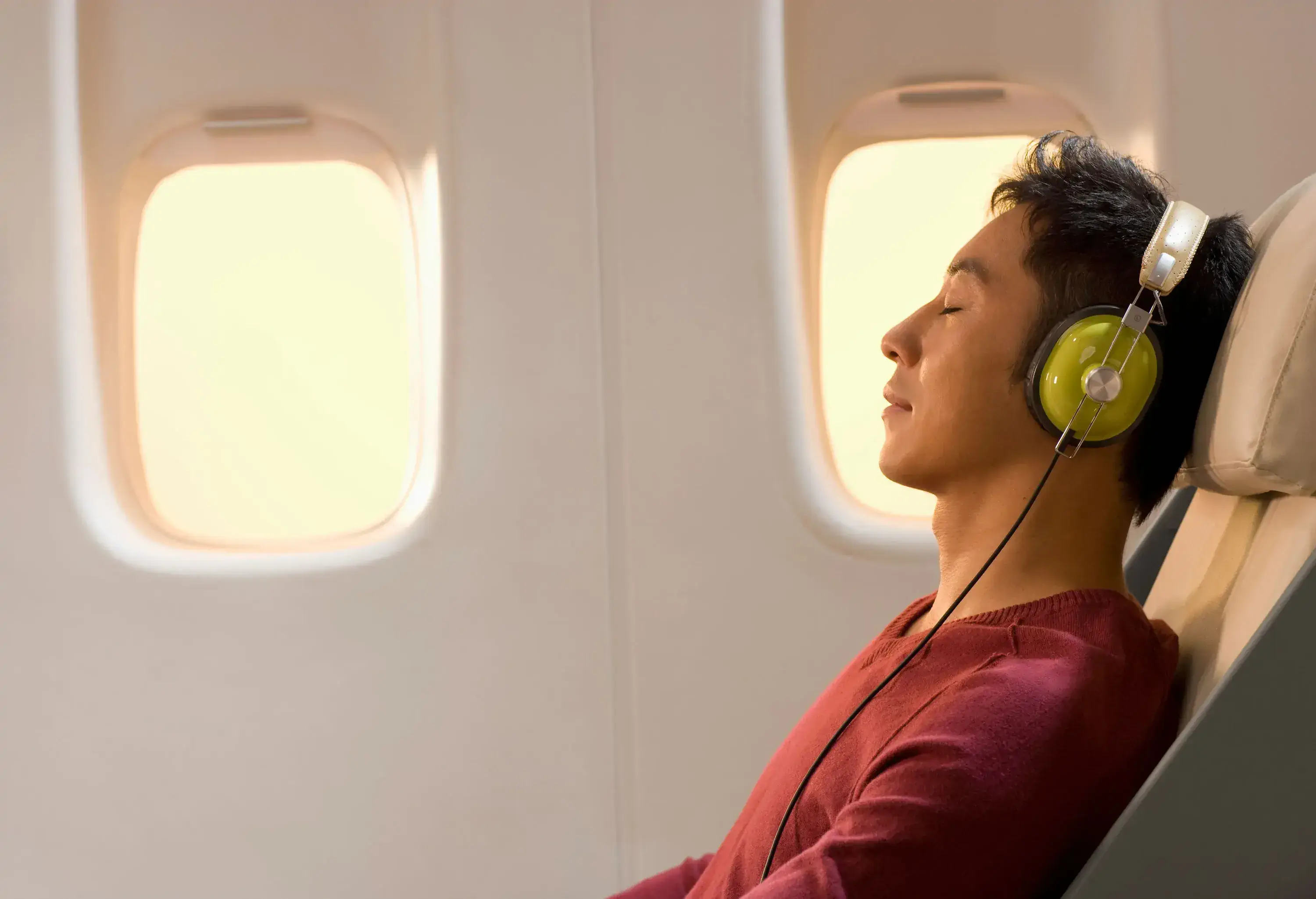
Even if you’re prepared and calm before boarding, unexpected feelings of anxiety can arise during the flight. But there are many well-established techniques to help deal with it.
Cognitive behavioral therapy (CBT).
CBT is a structured therapy that helps you identify and change unhelpful thought patterns and behaviors. It focuses on how your thoughts, feelings and actions influence each other. CBT is particularly effective for fear of flying. It helps you move away from fear-based to rational thoughts. So instead of reacting to what you’re feeling while flying, you can focus on what the evidence is telling you.
Gradual exposure.
Gradual exposure is a technique for reducing fear or anxiety by slowly, repeatedly facing the feared situation in manageable steps. Over time, it helps train your brain to understand that the situation is safe.
Box breathing.
Box breathing is a calming exercise where you inhale for four seconds, hold for four, exhale for four, and hold for four. Slow, deep breaths activate the parasympathetic nervous system, which helps to relax the body and mind. Studies have found that breathing exercises can slow heart rates, reduce stress and return rational thinking.
5-4-3-2-1 grounding method.
This is a sensory exercise that helps anchor you in the present and ease anxiety or panic. Notice five things you can see, four you can touch, three you can hear, two you can smell, and one you can taste.
Positive affirmations.
Affirmations are short, positive statements that can help to reframe your thoughts and feelings in a more positive light. For example, you could repeat something like, “I am safe and secure” or “I can handle this situation” throughout the flight.
How to handle turbulence.
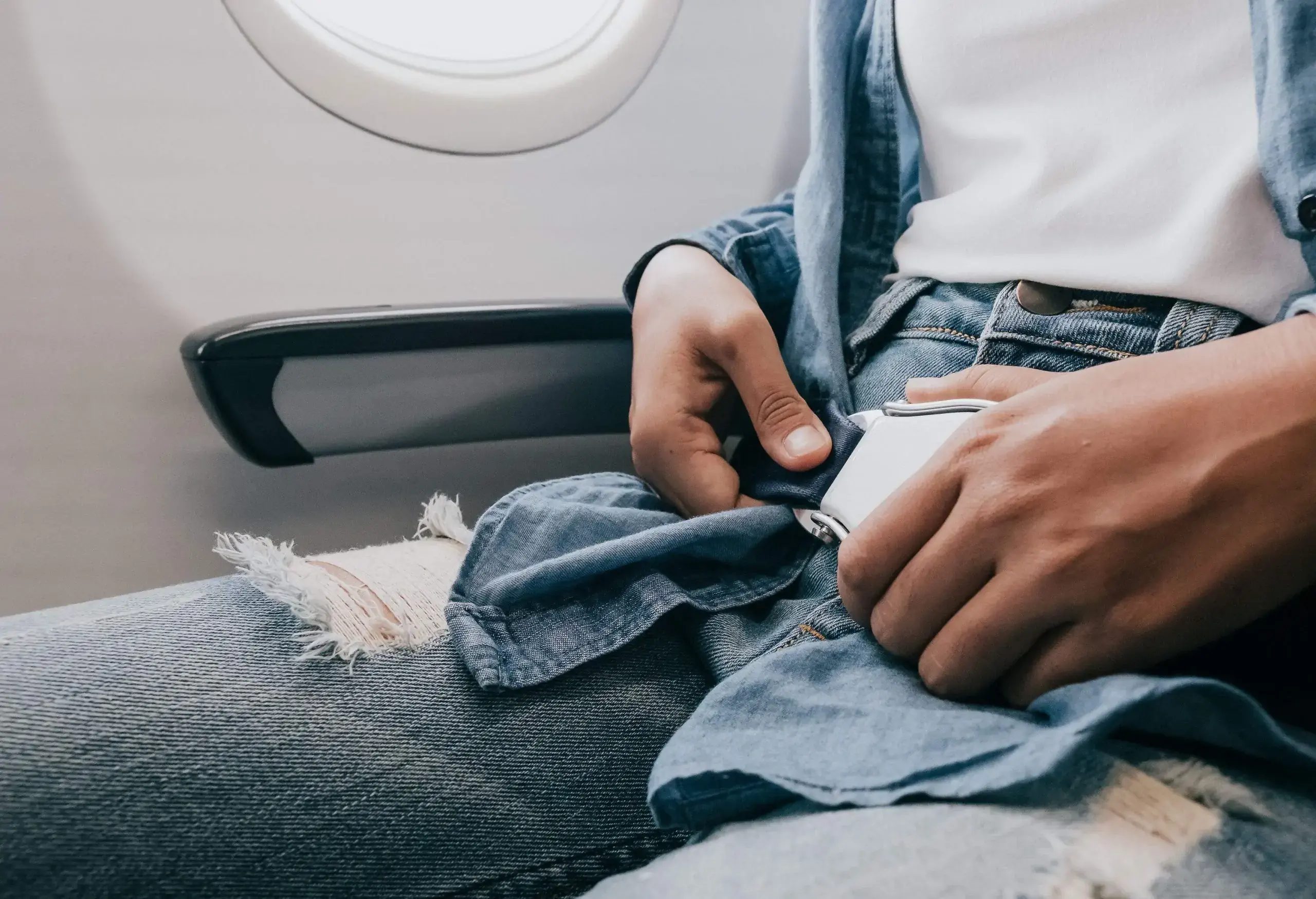
Turbulence is an entirely natural phenomenon yet it causes anxiety in almost all flyers. Nobody likes the feeling of being jolted around while flying high in the sky. The facts, however, are reassuring.
Injuries from turbulence are rare. According to FAA data, from 2009 to 2023, 40 passengers and 166 crew members were seriously injured because of turbulence. That’s from the millions and millions who fly every year.
At flight cruising levels, only about 3% of the atmosphere has light turbulence. About 1% has moderate turbulence and just a few tenths of a percent has severe turbulence at any given time.
These statistics may not offer much solace once turbulence hits though. If you feel anxious during a rough patch of turbulence, keep your seatbelt fastened. Remove anything around you that might cause injury like hot drinks and loose luggage. And follow the box breathing or 5-4-3-2-1 grounding method until it passes.
How safe is flying?
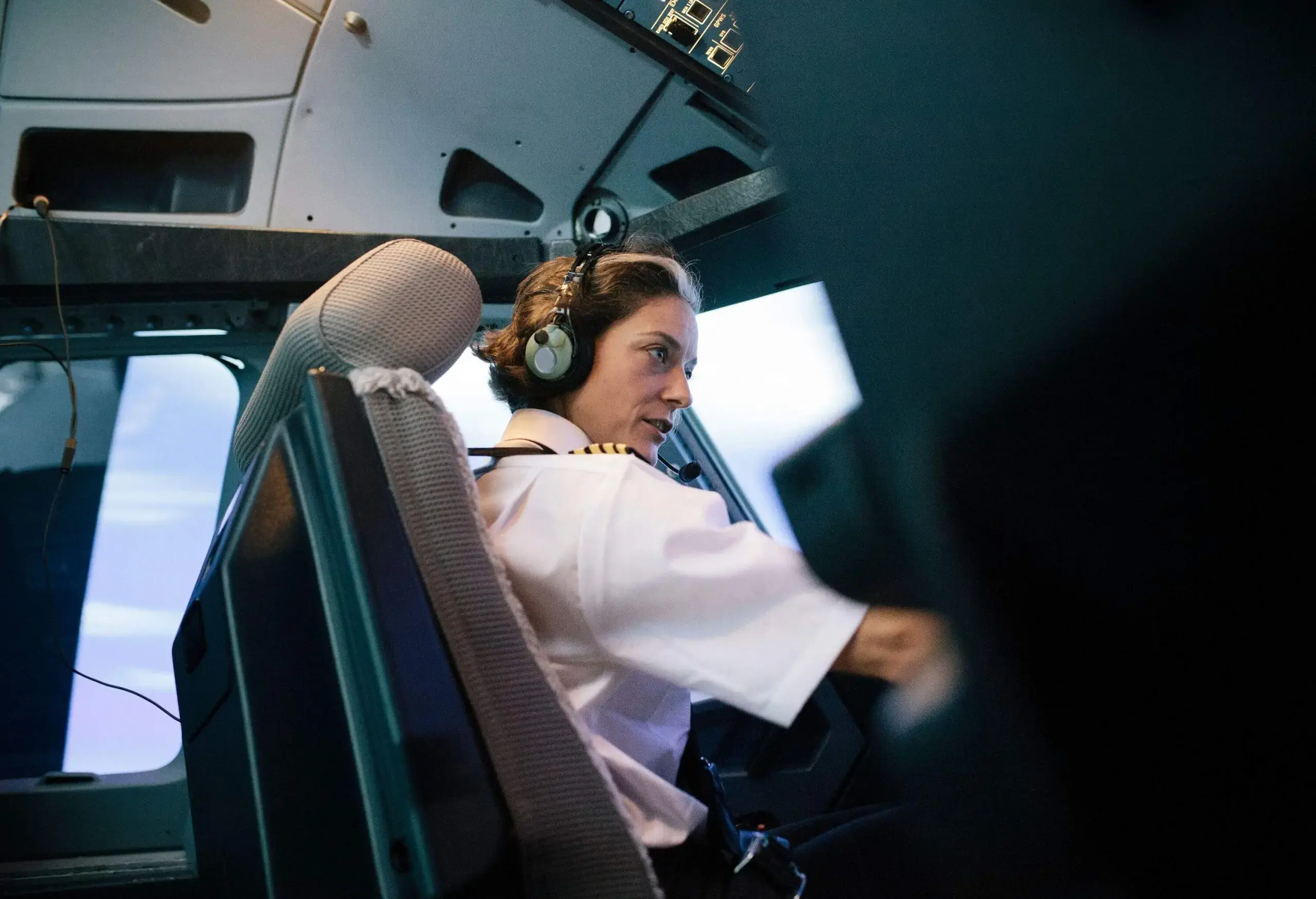
Much of what you might see about air travel in the news is negative. Yet commercial flight is one of the safest transportation options in the world.
According to the IATA 2024 Safety Report, there was one accident for every 0.88 million flights in 2024. And the fatality risk of flying was 0.06 per one million flights. That’s much safer than driving – the odds of dying in a car crash are a far scarier one in 95.
If statistics don’t necessarily ease your mind, then there are other ways to build confidence around air travel.
Patrick Smith, host of “Ask the Pilot”, says many people are afraid of flying simply because they don’t understand it. “The average passenger has a pretty limited understanding of how a plane flies and what its pilots actually do. And the degree to which certain myths are accepted as truth is disheartening.”
Yet it doesn’t need to be. While it can be difficult to overcome, the right information and advice can help get over a fear of flying. From understanding your triggers to taking precautions that minimize their impact, the tips and strategies in this article can help you find peace in flight. If not, it may be time to consider getting professional help and support.

